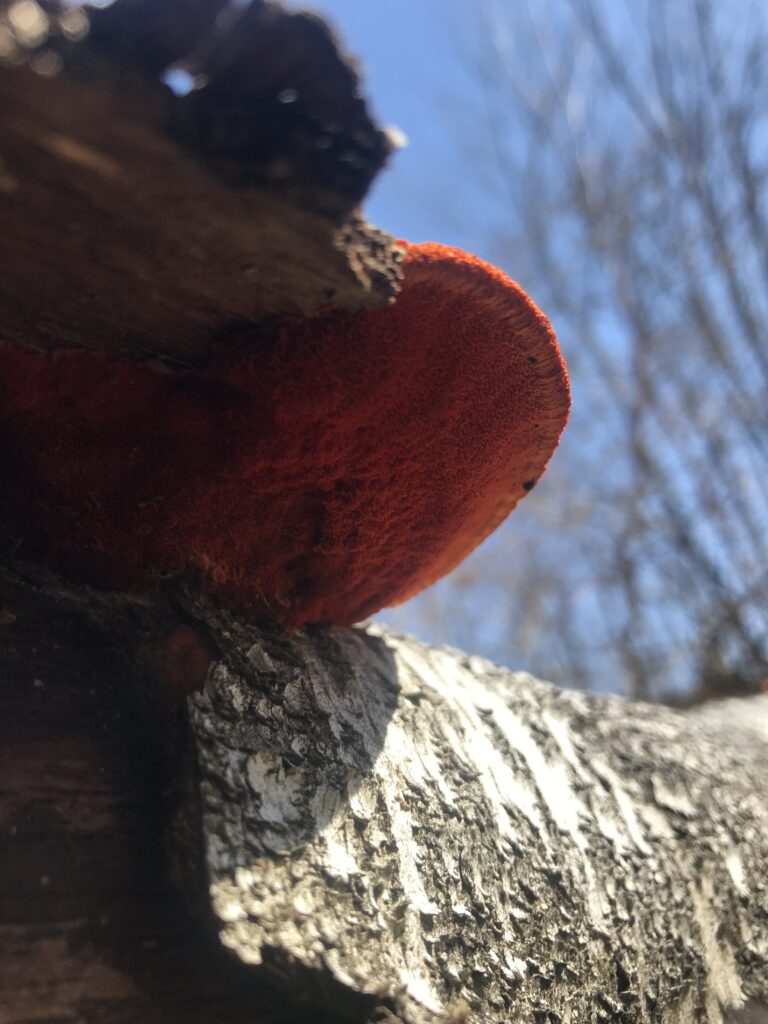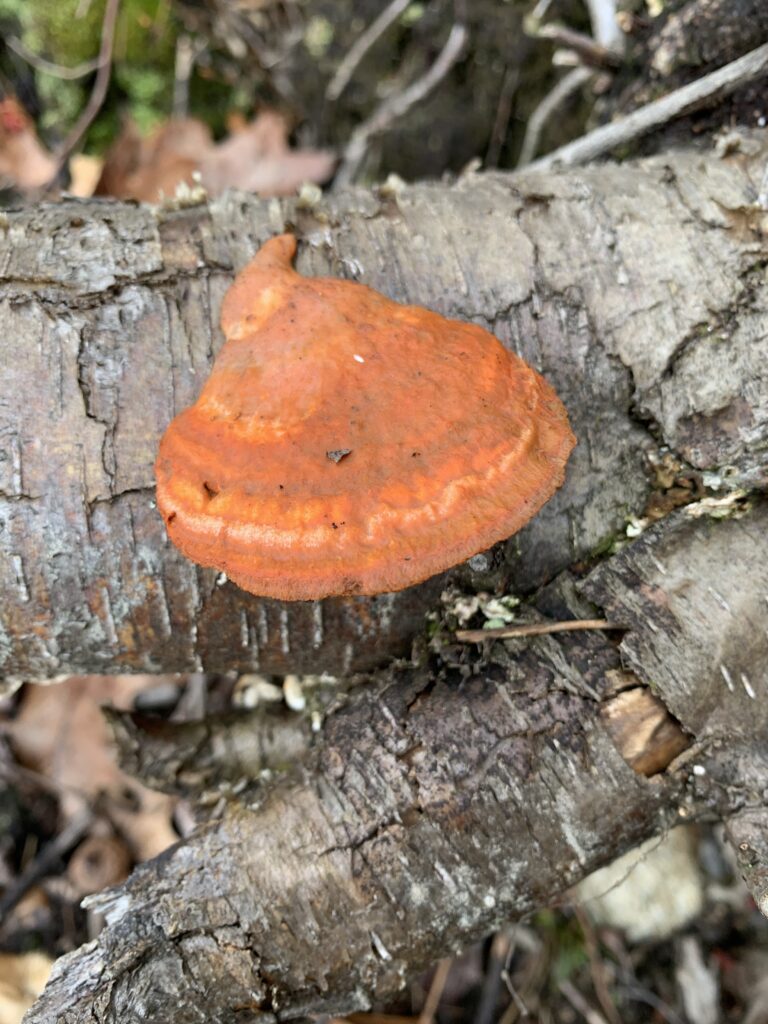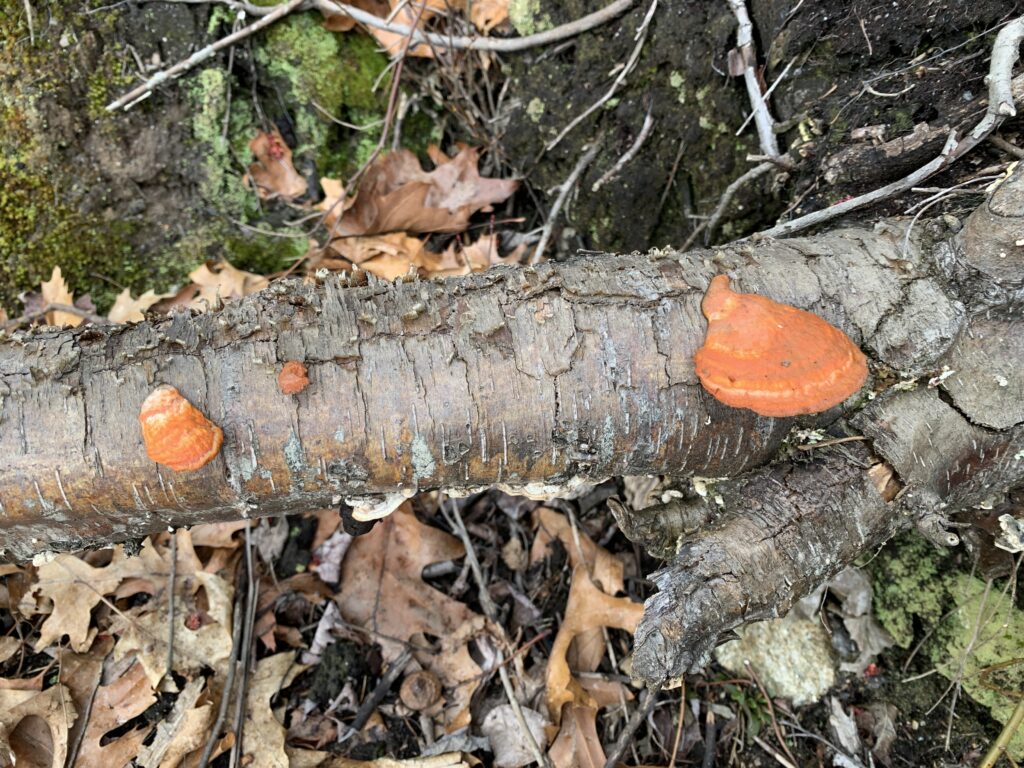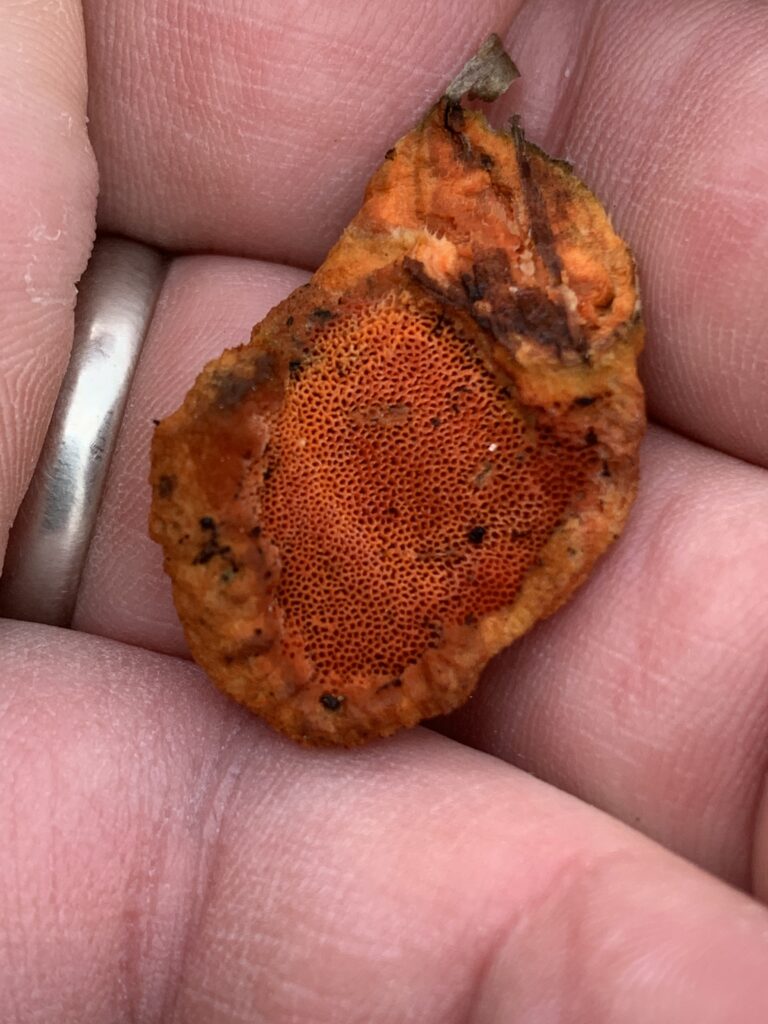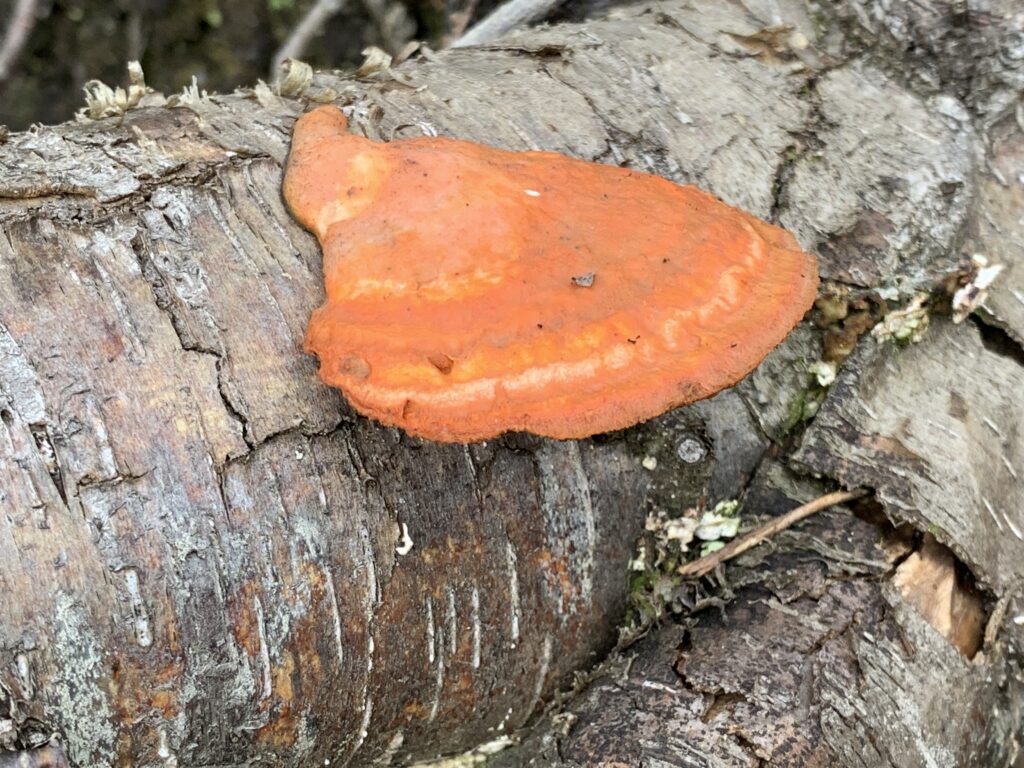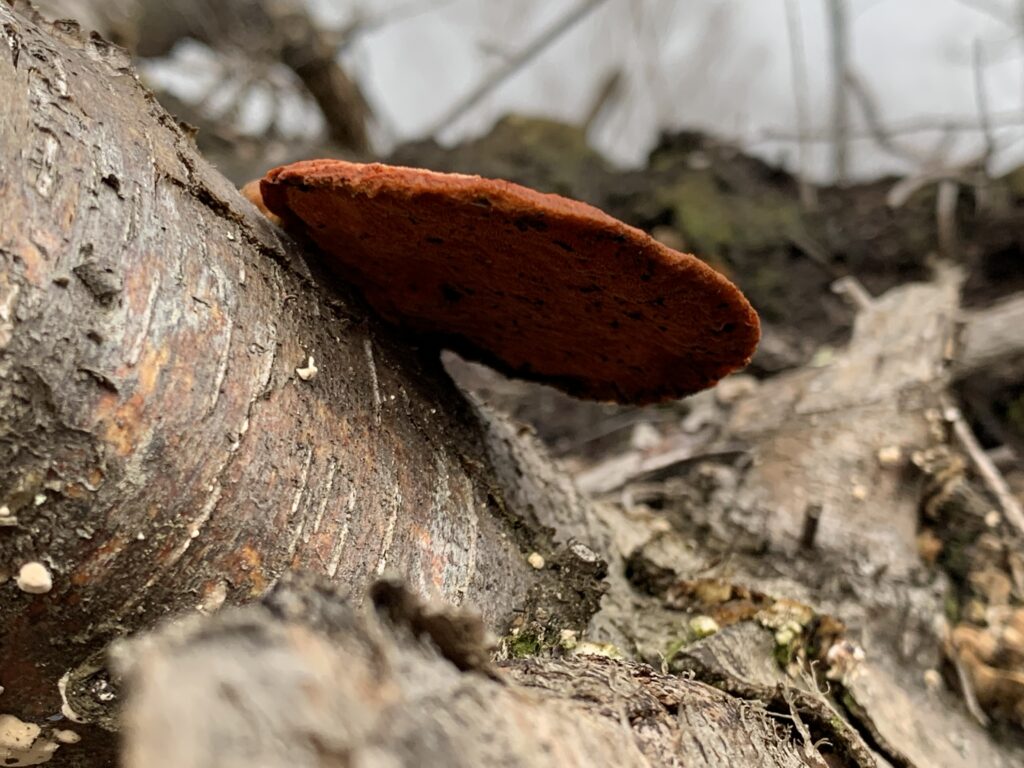| Ecology & Habitat | Saprotrophic, Growing Singly or in Clusters of closely spaced shelves. Found in mixed or hardwood forests and anywhere fallen or dead hardwood can be found. |
| Cap | Bright red-orange cap, bruises brownish-red |
| Pores | Bright orange-red pore surface, bruises dark red-brown |
| Spores | White |
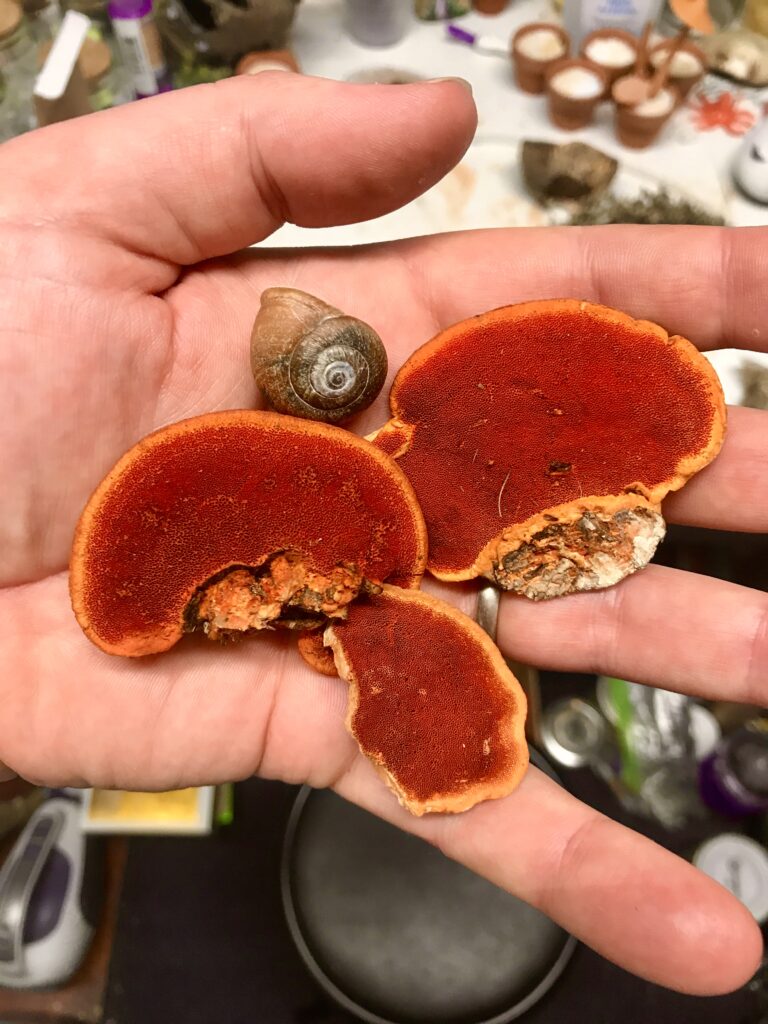
This small to medium sized polypore is relatively easy to identify since it’s one of the few polypores that are bright orange in color. Unlike chicken of the woods, the pore surface is orange, rather than yellow, and it has a distinct cap surface. The bright orange-red to scarlet fruiting bodies that are typically fan-shaped or semicircular in shape, with a smooth or slightly velvety surface. The pores are small and circular, and the flesh is tough and leathery. When it is older, the cap is usually a lighter orange than the pore surface, which can sometimes be so vibrant that it’s almost red. They are a long lasting polypore and can be found year round growing on hardwoods. They are easiest to spot in winter when the trees have lost their leaves and the forest floor is bare. The orange color tends to pop against the browns and whites of the winter forest. Its name is derived from the Greek words “pyknos” meaning dense and “poros” meaning pore, referring to the dense arrangement of its pores. But its most notable feature is the striking orange color on both the cap and the pore surface, which is unlike any other polypore that I am aware of.

